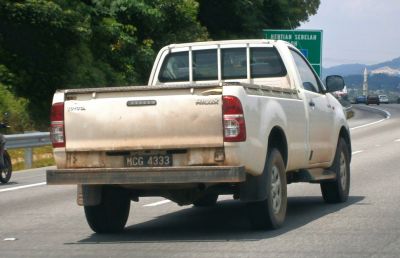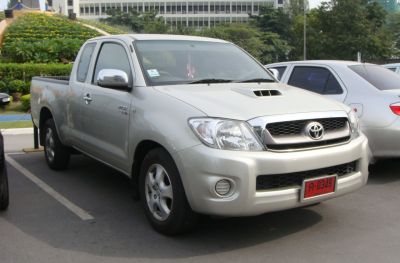 1980 Ford F-Series F-250 VII Regular Cab Dimensions, Size & Specs
1980 Ford F-Series F-250 VII Regular Cab Dimensions, Size & SpecsMeasurements of the 1980 Ford F-Series F-250 VII Regular Cab, engineered for optimal performance and comfort
| Dimensions | |
|---|---|
| Length: | 5291 mm208.3 in17.4 ft |
| Width: | 1778 mm70.0 in5.8 ft |
| Height: | 1829-1907 mm72.0-75.1 in6.0-6.3 ft |
| Weight Specifications | |
| Maximal permitted Weight: | 3311-3538 kg7300-7800 lbs |
| Tire Specifications | |
| Rims Sizes: | Other Rims:
|
| Tire Sizes: |
|
The 1980 Ford F-Series F-250 VII Regular Cab exemplifies the rugged and durable full-size pickup trucks produced by Ford during the late 1970s through the mid-1980s. Produced from 1979 to 1986, this generation of the F-250 was designed primarily for workhorse performance, offering a solid combination of size, capability, and utility. The Regular Cab configuration adhered to a straightforward design that maximized payload and towing capacity while maintaining manageable dimensions for its class. The truck measures 5291 mm (208.4 inches) in length, which allows for a balanced footprint ideal for maneuvering on various terrains while providing ample bed space for heavy-duty hauling. Its width is 1778 mm (70 inches), offering a stable road presence without being overly wide for typical highway and off-road conditions. Height varies between 1829 mm and 1907 mm (72 to 75 inches), dependent on suspension setup and tire options, reflecting slight variations possible in ride height for different trims or load capabilities. The maximum weight ranges from 3311 kg to 3538 kg (7300 to 7800 lbs), underscoring the truck's design for heavy payloads and towing power. Typical wheels fitted include 16-inch rims measured at 6J x 16 or 6J x 16.5, paired with tires in sizes such as 215/85 R16, 215/85 R16.5, and 235/85 R16.5. These tires support the truck’s weight capacity while aiding in traction under varied driving conditions. The 1980 Ford F-Series F-250 VII Regular Cab stands as a classic example of the tough, reliable pickup trucks favored by professionals and enthusiasts alike, combining traditional truck dimensions with the robust build quality Ford is known for.
Discover the standout features that make the 1980 Ford F-Series F-250 VII Regular Cab a leader in its class
Have a question? Please check our knowledgebase first.
The 1980 Ford F-Series F-250 VII Regular Cab pickup truck measures 5291 mm (208.3 inches) in length, 1778 mm (70.0 inches) in width, and has a height ranging from 1829 mm to 1907 mm (72.0 to 75.0 inches) depending on the specific configuration. These dimensions reflect the truck's robust and functional design typical of the late 1970s and early 1980s pickups, providing a durable and spacious platform suitable for heavy-duty tasks and versatile utility.
The maximum weight for the 1980 Ford F-Series F-250 VII Regular Cab ranges between 3311 kg and 3538 kg (approximately 7300 to 7800 pounds). This gross vehicle weight rating (GVWR) encompasses the vehicle’s own weight plus allowable load including passengers, cargo, and any additional equipment. This capacity emphasizes the truck’s role as a capable heavy-duty vehicle within the F-Series lineup, making it suitable for demanding towing and payload requirements common to work trucks of that era.
Standard residential garages typically measure around 2440 mm (8 feet) in width and 4880 mm (16 feet) in depth. The 1980 Ford F-Series F-250 measures 1778 mm (70 inches) wide and 5291 mm (208 inches) long, which means it fits comfortably width-wise. However, in length, at roughly 5.3 meters (17.3 feet), it might extend slightly beyond the typical garage depth. Owners with standard single-car garage spaces may find it a tight fit or require a larger garage or carport to accommodate the truck fully with extra space for opening doors and maneuverability.
Compared to its predecessor, the sixth generation F-250 (produced roughly from 1973-1979), the 1980 seventh generation model maintains a similar footprint but offers modest refinements in design and dimension. The length of the seventh generation stands at 5291 mm (208.3 inches), which is comparable to the previous generation. Width and height also remain quite similar, although minor height variations occur depending on suspension and body mounting options. This consistency allowed Ford to retain the rugged utility and big-truck presence while improving styling, comfort, and engine choices in the 1980 model year.
The 1980 Ford F-Series F-250 VII Regular Cab originally came equipped with rims sized at 6J x 16.5 and 6J x 16. The tire sizes compatible include 215/85 R16.5, 215/85 R16, and 235/85 R16.5. These tire and rim dimensions were chosen to provide optimal ground clearance, payload capability, and durability for a heavy-duty pickup. The larger tire sizes contribute to better off-road traction and load-bearing capabilities, essential features for this truck’s workhorse applications.
The height of the 1980 Ford F-Series F-250 VII Regular Cab ranges from 1829 mm to 1907 mm (72.0 to 75.0 inches). This variation depends on the specific suspension setup, tire profile, and whether the truck is equipped with any optional off-road package or lifted suspension. Differences in wheel size or aftermarket modifications could also alter the truck’s effective height. The height range allows for versatility in use, making the truck suitable for both on-road highway duties and off-road or heavy-duty work environments where additional ground clearance might be needed.
Compared to similar heavy-duty pickups from the late 1970s and early 1980s, such as the Chevrolet C/K 2500 and Dodge Ram 250, the 1980 Ford F-250 VII Regular Cab is fairly comparable in dimensions and weight capacity. With a length of 5291 mm (208.3 inches) and widths around 1778 mm (70 inches), it fits firmly into the large pickup category. Weight ratings and tire sizes also align closely with competitors, reflecting the era’s typical design philosophy of larger, durable, rear-wheel-drive trucks optimized for work and utility. Each brand, however, had subtle differences in suspension tuning, engine options, and cab configurations which influenced user preference.
While specific bed dimensions are not provided here, the regular cab configuration of the 1980 Ford F-Series F-250 typically paired with a standard or long bed measuring roughly between 2.13 meters (84 inches) to 2.44 meters (96 inches) in length. The truck’s gross vehicle weight rating of up to 3538 kg (7800 lbs) supports a payload capacity likely ranging between 800 kg and 1100 kg (1760 to 2420 lbs), depending on engine choices and axle ratios. This payload capability makes the F-250 a powerful work truck capable of hauling construction materials, tools, and equipment reliably across demanding conditions.
The 1980 Ford F-Series F-250 VII Regular Cab was offered with a range of engines including inline six-cylinders, V8s, and diesel options. Gasoline engines generally featured displacements around 5.0 to 7.5 liters producing varying power outputs suitable for heavy towing and load hauling. Transmission choices included manual 4- and 5-speed gearboxes as well as automatic 3-speed units. These options allowed buyers to tailor the truck’s performance to their specific needs, whether emphasizing torque and durability for heavy-duty work or comfort and drivability for everyday use.
With a width of 1778 mm (70 inches), the 1980 Ford F-Series F-250 VII Regular Cab is relatively wide for a pickup truck of its time, offering a stable ride and substantial road presence. However, this width can present challenges in tight urban environments or narrow streets, requiring careful maneuvering and awareness of surroundings. Drivers accustomed to smaller vehicles may find parking and navigating congested areas more demanding. Despite this, the truck’s size is a deliberate balance that enhances payload and towing capacity without excessively compromising everyday drivability.
Discover similar sized cars.

| Production: | 2011-2015 |
|---|---|
| Model Year: | 2012 |
| Length: | 5260 mm207.1 in |
| Width: | 1760 mm69.3 in |
| Height: | 1795 mm70.7 in |

| Production: | 2009-2011 |
|---|---|
| Model Year: | 2009 |
| Length: | 5255 mm206.9 in |
| Width: | 1760 mm69.3 in |
| Height: | 1795 mm70.7 in |
